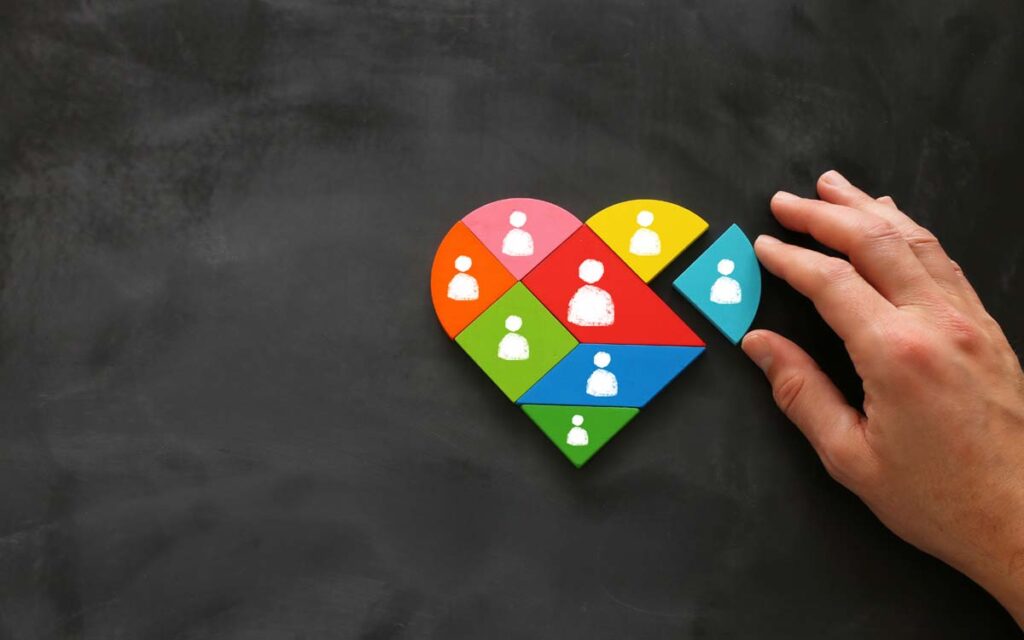For World Health Day this year, we want to talk about burnout prevention. This is a very important and popular topic as there has been a significant rise in burnout rates among all professions. The Great Resignation is underway for a reason that appears to have accelerated from the pandemic. Today, 58% of employees report burnout, up from 45% in the early days of the COVID-19 pandemic. There are many ways that burnout occurs:
- Long-term excessive workload
- Constantly changing priorities
- Unclear (or unrealistic) goals and expectations
- Uneven or unfair distribution of work
- Minimal support from your leadership
Nobody performs their best work in burnout mode, and working 60+ hour weeks is not sustainable. Using up all of your emotional energy during the workday means that you have no energy left for yourself or your family. Once you start over-working, it can be a hard habit to break. Therefore, it’s crucial to create a sustainable work-life balance for long-term job satisfaction and health. If you manage to balance personal responsibilities alongside work, it will be the difference between just getting by and thriving—at work, at home, everywhere. It may seem impossible to do both at times, which can quickly lead to burnout and underperformance.
Mental health is just as important as physical health. And organizations need to foster a healthy working environment for their teams to thrive. Here are some of our best tips for creating and maintaining a balanced workload for yourself and your team:
 1. Learn how to say no
1. Learn how to say no
You are solely responsible for protecting your time in and out of work, no one else will build and maintain boundaries for you! Don’t be a yes-person and feel like working longer hours is a job safety net (it isn’t, and it shouldn’t be). A great time to establish boundary-setting habits is when you start a job, and you can show (and teach) your teammates how you work. If you’re already in a position where you’ve been working 60-hour weeks and want to take it down a notch, talk with your manager and your team to shift priorities and working styles moving forward. Who knows—you might start a trend that leads to a more balanced, productive, and happy team!
2. Estimate your time
One of the best ways to make sure you don’t have too much work on your plate is to estimate the time to complete each task. Starting a new project from scratch can feel overwhelming at first. We suggest breaking up your project into smaller tasks so that you get familiar with all the moving pieces early and tackle estimating one section of work at a time. It is almost impossible to estimate how long each task will take to the day or minute. Thinking in terms of a best/worst case scenario can be powerful – and help you set realistic expectations from the outset. Use a broader range for tasks with more uncertainty and a smaller range for more familiar tasks. LiquidPlanner uses ranged estimation to predict when work will be completed with 90% confidence. Project management software helps you stop over-committing to a project that demands an unreasonable amount of time.

3. Prioritize your projects
When your organization’s priorities are built into your project plans, the risk of spending time on the wrong work is significantly reduced. We all want to feel a sense of purpose and contribute to work that aligns with company goals. So if you’re finding it hard to prioritize what you should work on first, talk to leadership. They can inform you of key launch dates or prioritize projects if your team can’t complete all of the work in time. If “everything is priority #1” or leadership struggles to align on the priority of projects in the portfolio, consider encouraging them to use a structured prioritization system. Priority-based project management software like LiquidPlanner allows you to input all of your projects and tasks into the software in priority order, along with key deliverable dates and time estimation. This provides a centralized source of truth so that you have visibility into what is most important and how this relates to your individual priorities.
When priorities shift or an urgent project is added to the project portfolio, LiquidPlanner’s scheduling engine will automatically account for this change and recalculate your impacted project dates. The scheduling engine will provide you insights on risk and keep everyone aligned on what is most important in real-time.
4. Delegate when possible
Considering all of the work on your plate, are some tasks better handled by another team or colleague? This could be a tricky issue. No one wants to give their colleagues a project they didn’t ask for, especially when you aren’t their manager. But you may need to ask yourself, is this task better handled by someone else? Often we may also feel a sense of control by keeping tasks on our plate that shouldn’t be ours. By letting go of control, you may free yourself up to spend time on meaningful work you wouldn’t have gotten to otherwise.
Talk with your manager about tasks that don’t seem to fit within the scope of your role or if you’re generally feeling overextended. By reducing your task list, you can do a better job focusing on fewer tasks than being spread so thin. Or, you could find projects with cut-off points that you can hand off to other team members to execute. Plus, by sharing your project riches, you might give your team members a chance to grow in their roles. It doesn’t hurt to ask the question, but if you don’t – you might be taking on too much, which could hurt your mental health in the long run.

5. Take breaks
Studies vary, but generally, our brains need a rest every 90 minutes. It’s hard to pull yourself away from work when you’re in a productive flow. But when you can, try to take a five-minute break to step away from what you’re doing. Giving your brain a breather and some objective distance from the project could save you hours down the road. Have you ever overworked a problem so much that you spend hours going nowhere? That wasted time can eat into the precious personal time you could be spending with friends and family. Going outside, getting fresh air, and seeing nature gives you a fresh perspective. Especially when you’re going through a stressful time at work or stuck on a problem, having even a brief connection with nature can remind us of the much-bigger world around us. Sometimes we need to be reminded that our problematic project isn’t the center of the universe.
6. Use resource management software
It’s essential not to take on extra work when you’re already overbooked. Or give your team new project work when they’re already at capacity. Overpromising and feeling like you underdelivered can feel defeating and lead to faster work exhaustion. Resource management tools like LiquidPlanner can help teams ensure a balanced workload in a few key ways:
- Resource scheduling will take into account your team’s availability each week. In other words, if you have a 40-hour a week limit, then you will only be scheduled for 40 hours worth of work. This tool can also account for PTO and other company holidays to take that time off into account. During the initial planning phases, you can quickly see if you have the capacity to take a project on and complete it within the deadline. Resource scheduling is the best tool for expectation setting with leadership and clients.
- Resource leveling helps to ensure each team member has a balanced workload. For example, most of the work is sometimes placed on a few key team members. At the same time, others may have a lot more unutilized capacity. Automatic resource leveling identifies project work that can be moved to other team members that have capacity so they can get the job done on time without overworking anyone.
Career burnout not only impacts your work productivity and performance but can spill over into your personal life. Burnout can negatively impact your well-being and your relationships with family and friends. Burnout can also take up to five years to recover fully. In the long run, you want to develop work-smarter habits, not work-harder ones. Try LiquidPlanner for free today to create team habits to maintain a balanced workload.







